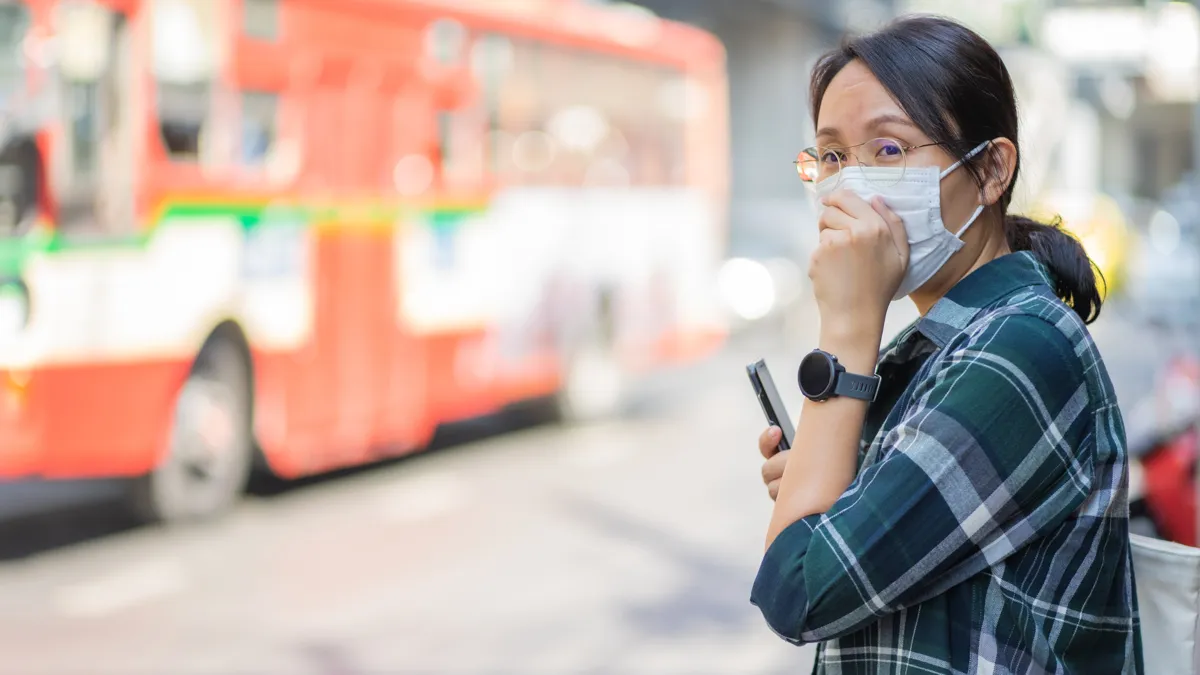Atmospheric particulate matter was the largest contributor to the global disease burden in 2021

Every year, the World Health Organization (WHO) summarizes global progress in the fight against malaria. It publishes data on the number of cases in affected countries and their annual changes, sets new targets, and assesses the current funding situation. The UN publishes a similar report each year on the fight against HIV/AIDS. Regular monitoring of serious public health threats is essential for an effective response, helping to direct resources where they are most needed and to find solutions that work.
However, similarly authoritative and up-to-date global statistics are lacking on air pollution, a health threat that kills more people than malaria and HIV/AIDS combined . Particulate matter (air pollution commonly associated with dust and smoke) was the single largest contributor to the global disease burden in 2021, reducing life expectancy by 1.9 years . Air pollution was linked to the deaths of more than 700,000 children under five in 2021, making it the second-largest risk factor for death in this age group.
The WHO is the world’s leading authority on air quality and publishes global pollution standards. The latest version of the guidelines was published in 2021 to improve air quality standards: the recommended level of PM2.5 particulate matter was reduced from ten to five micrograms per cubic metre.
WHO collects annual data on particulate matter levels in cities around the world through its Ambient Air Quality Database . The database is populated primarily by countries and is updated every two to three years. In the latest version (updated in January 2024), only 0.4% of cities had reported data for 2022, and more than half of cities had data that was at least seven years old. Many countries in Africa, Latin America and Asia, where air pollution causes a disproportionate share of illness, do not update their data, and the four countries with the most polluted air do not report anything at all. The lack of data makes it impossible to measure global progress and ensure strategic resource allocation.
Satellite data could fill this gap. And some groups collect such information, but there is no authoritative database. (For example, we asked 10 air quality experts where they get their most recent data and got 14 different answers. None of them met the criteria for an authoritative global data source.) In addition, annual statistics are often a couple of years behind, and there are no established mechanisms for assessing their quality. Despite their name, satellite air quality data can only be used in calculations using ground-based monitoring data. In countries where such monitoring is not possible, satellite data are less reliable.
To tackle the world’s air pollution problem, we need a clear global picture. Fortunately, it is technologically, logistically, and politically possible to create a system that regularly tracks collective progress in reducing particulate matter levels and has built-in mechanisms to improve data collection in the most polluted places.
The first goal should be to produce annual and authoritative PM2.5 pollution statistics for all countries. This requires encouraging countries to provide more up-to-date ground-based monitoring data, developing procedures to combine these data with available satellite information to determine annual pollution levels, identifying gaps in data and collection systems, and allocating resources accordingly.
Global development organizations and philanthropic foundations will need to provide significant financial and human resources to get this work started, including by supporting countries that currently lack the capacity to monitor air quality. Leaders in medicine, the environment, and finance will need to work together, as they already do to tackle other major challenges (malaria, HIV/AIDS, Covid-19, tuberculosis, and so on).
Several UN agencies, including WHO, the World Meteorological Organization, and the UN Environment Programme, could undertake or coordinate data collection and system development. Organizations such as the World Bank, regional development banks (e.g., the African Development Bank, the Asian Development Bank, the Inter-American Development Bank), bilateral donors, and philanthropic organizations should help with funding.
Collective international action is urgently needed to address this local but global problem. A new air quality monitoring report published by the independent Our Common Air Commission sets out the Commission’s recommendations on a number of key issues. In recent years, we have successfully tackled global health crises, and this work has helped to develop approaches that can be applied in other situations. The question now is whether the international community will use them to tackle the greatest external threat to global health.
Soumya Swaminathan, former chief scientist of the World Health Organization, is now co-chair of the Our Common Air Commission and chief adviser to the National Tuberculosis Elimination Programme of the Ministry of Health and Family Welfare of India.
Christa Hasenkopf , director of the Clean Air Program at the University of Chicago’s Energy Policy Institute and a member of the Our Common Air Commission

